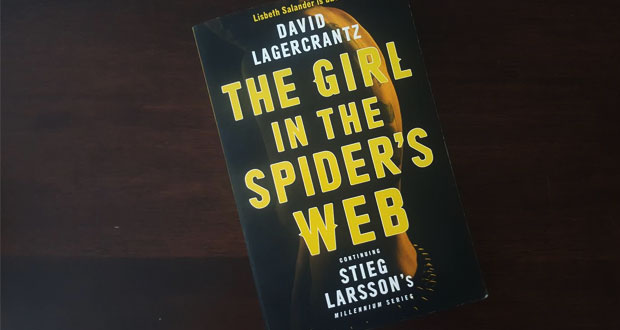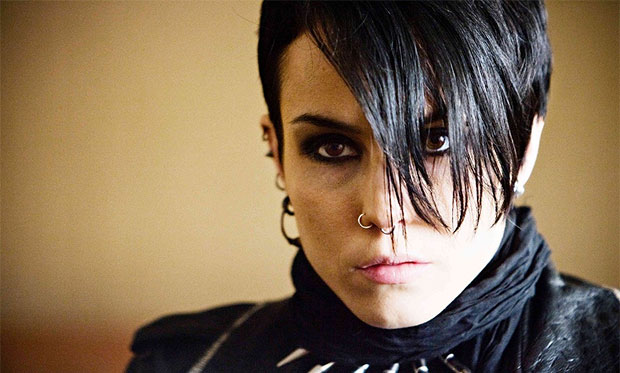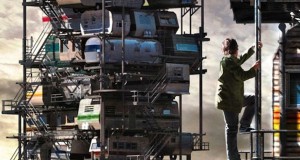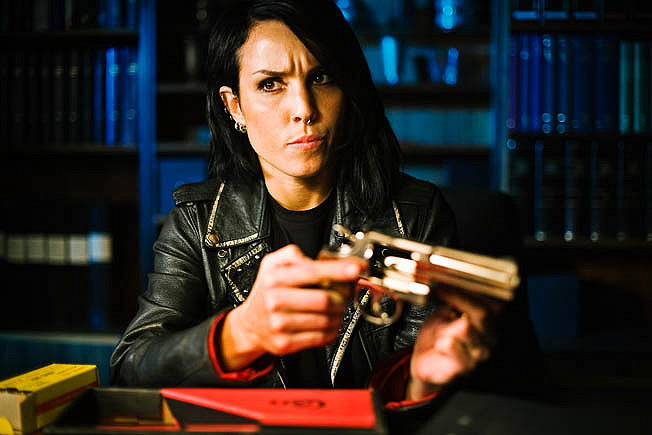Note: This review contains spoilers.
“This story begins with a dream, and not a particularly spectacular one at that. Just a hand beating rhythmically and relentlessly on a mattress in a room on Lundagatan.
Yet it still gets Lisbeth Salander out of her bed and in the early light of dawn.”
Stieg Larsson never lived to see the popularity of his Millenium series, passing away of a heart attack before the books found a publisher and subsequent world wide fame. Larsson originally wrote the books recreationally and although the existing trilogy offers some closure in the story of Lisbeth Salander – computer hacker extraordinaire and ass kicking avenger of wronged women – bringing down her father’s criminal empire, there was still plenty of material that remained unresolved. The greatest unfinished storyline was the fate of Lisbeth’s missing twin sister who was supposedly equally as brilliant and remarkable as the heroine we know.
David Lagercrantz picks up the story where Larsson left off with this new instalment in the Millenium series titled The Girl In The Spider’s Web. Years after the events of The Girl Who Kicked The Hornet’s Nest, we are reintroduced to the many familiar faces of the series. Not only do Lisbeth Salander and Mikael Blomkvist return, so do the rest of the Millenium magazine staff (Erika, Malin etc) as well as Lisbeth’s guardian Holger Palmgren and everyone’s favourite gumshoe D.I Bublanski.
The opening chapters of The Girl In The Spider’s Web made a number of immediate impressions on me. Firstly, it was nice to revisit these characters. I like Lisbeth and Mikael a lot. They are both delightfully idealistic social avengers, waging a never ending war against right wing extremists. Lagercrantz describes a moment when online trolls are abusing an asylum seeker in the comments section of a news article to which Salander reacts by tracing their IPs, finding out all of their real life names and occupations and posting them online for all to see. It’s patently ridiculous but a fun bit of escapism. Salander is basically the fictional embodiment of a ‘social justice warrior’.
Secondly, I realized that bringing these characters into 2015 presents the author will plenty of new material. When you consider that the original trilogy was completed before 2004, it means that these characters – a renowned hacker and a famous journalist – never had an opportunity to experience the social media revolution or the death of print media. And when the story begins by introducing characters from the NSA, you realize that there are plenty of real world events that Lagercrantz could draw inspiration from that are relevant to the Millenium series. Edward Snowden, Julian Assange, the Charlie Hebdo shootings….in many ways the world today is a very different one from the one that Larsson lived in a decade ago.
Any time a book series changes authors can be a dicey proposition. Who do you aim to please? Do you try and stay faithful to the style and content of the original author or do you strike out and do your own thing? I felt that David Lagercrantz retains the themes and ethos of Larsson’s vision – namely a crusade against misogynists and organized crime – but he makes a distinctive shift in the tone and pace of the storytelling.
Casting my mind back to The Girl With The Dragon Tattoo, the murder mystery of Harriet Vanger unfolds at a slow and methodical pace. Larsson wrote at length about the Vanger corporation included lengthy passages dedicated to describing their acts of corporate espionage as well as their complicated family lineage. Mikael Blomkvist spends much of the first book researching Harriet’s disappearance which mostly involves him sitting in a remote cabin, reading old newspaper clippings. The story does pick up its pace as it reaches its conclusion and the subsequent books would up the ante by introducing some bikie gangs but there was still a very deliberate sense of pace about the proceedings.
By comparison, The Girl In The Spider’s Web flies out of the blocks. The story begins with a brilliant computer scientist – Frans Balder – dramatically regaining custody of his autistic savant child from his wife and her abusive partner. He is contacted by a member of the NSA who informs him that some hostile forces may be out to get him. Not longer after, we are cast headlong into a high speed thriller that involves shoot outs, assassins, car chases and kidnappings.
If The Girl With The Dragon Tattoo draws its influences from Agatha Christie and Pippie Longstockings, The Girl In The Spider’s Web feels like you’re reading the transcript of an episode of 24. Lisbeth Salander, who once got her revenge on evil men by outsmarting them in a game of wits, is now also a physically dominant ass-kicking machine who beats down her oppressors as well as outsmarting them. A lot of the plot developments in The Girl In The Spider’s Web are not the result of research and detective work by Mikael Blomkvist but contrivances drawn from characters marching headlong into danger – like a scientist ignoring a phone call explicitly telling them to leave home or a journalist who has important information getting distracted by a mysterious woman inviting them into a hotel room when they were on the way to tell someone critical information.
One of the clumsiest revelations in The Girl In The Spider’s Web is that almost all the characters involved with Lisbeth’s hacking network, both allies and enemies – are named after Marvel Comics Avengers characters (no, seriously). I have no idea if this was Larsson’s original plan or if this is a Lagercrantz special. Either way, it’s pretty silly. But upon reflection, perhaps its just indicative of the direction that the story is now headed. Lisbeth Salander basically is a super hero at this stage. And when we finally have the big reveal and are introduced to her estranged twin Camilla Salander, we learn that she’s basically Lisbeth’s diametrically opposed super villain who is just as intelligent and resourceful but she applies those talents to working as a criminal mastermind.
Not a whole lot gets resolved in this book. It’s more of a series reboot, laying the cards on the table for future books. Lisbeth and Mikael are back, but not as we know them. The times have changed, the author has changed and the stakes have been raised. Lagercrantz is taking the series down a more action oriented path but perhaps thats no bad thing. I look forward to seeing how it plays out.
 The FAT Website est. 1999
The FAT Website est. 1999







